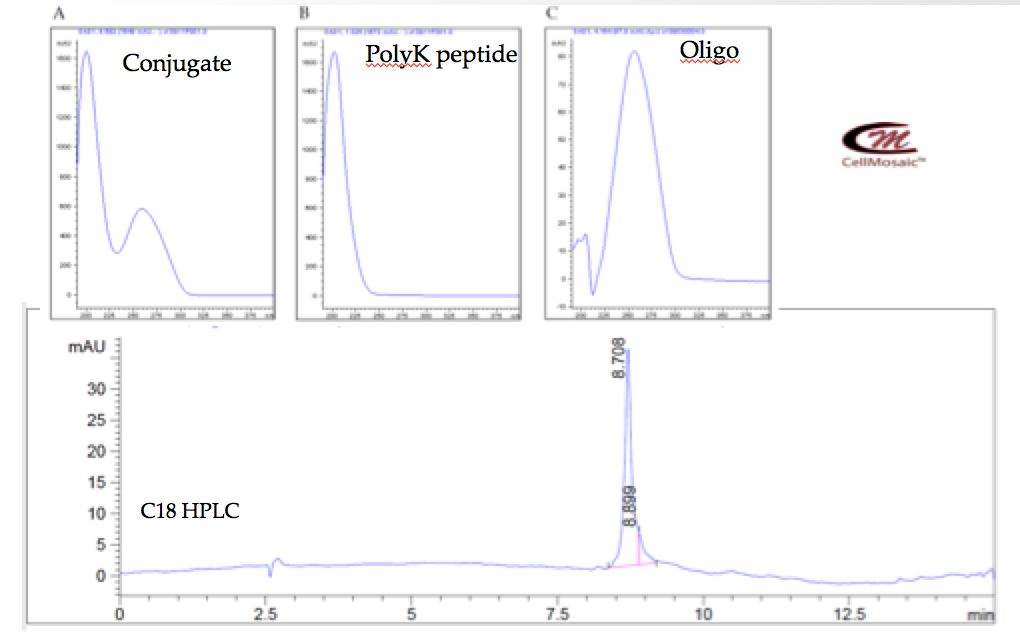There are no products listed under this category.
Welcome to CM Online Store!
Antibody Drug Conjugate Kits!
AqT bioconjugates coming soon!
 CellMosaic® offers bioconjugation research and development services for biopharmaceutical companies focused on antisense and siRNA-based therapeutics.
CellMosaic® offers bioconjugation research and development services for biopharmaceutical companies focused on antisense and siRNA-based therapeutics.
One of the major challenges in developing oligonucleotide analogs and siRNA therapeutics is their limited cellular uptake, poor in vivo pharmacokinetics, and lack of specificity for target tissues or cells. Recent studies have shown that chemically conjugating oligonucleotide analogs and siRNAs to bioactive molecules, lipids, or polymers can overcome many of these limitations.
CellMosaic® prepares oligo-based conjugates using unique conjugation strategies developed in-house. PEG or other classical polymers can be attached at any position on the oligo—3', 5', or through a modified base—either during solid-phase synthesis or in the post-synthesis solution phase. In most cases, a single pure conjugate can be obtained.
Advantages of CellMosaic's conjugation strategy:
Case Studies:

There are no products listed under this category.